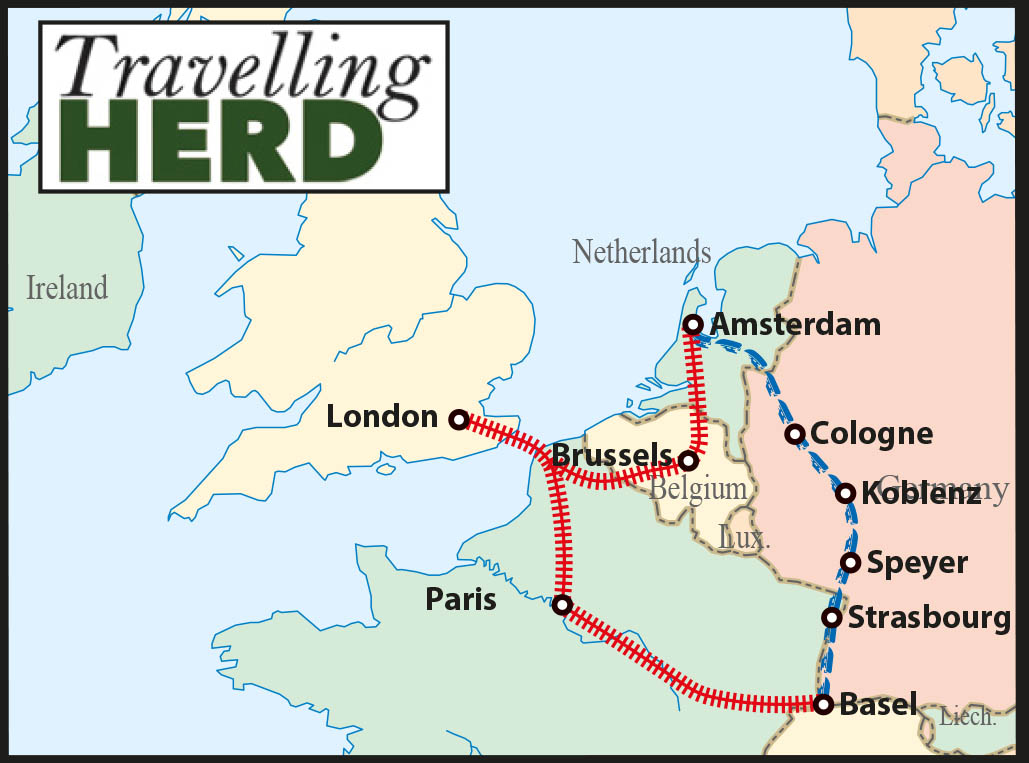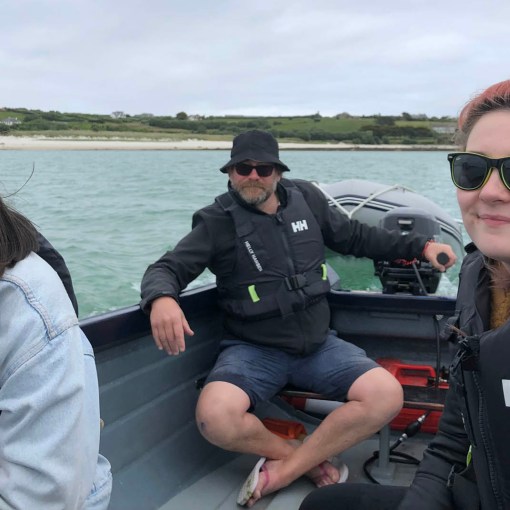Read this blog: The one where we pass through the Rhine Gorge
Thursday 13th to Saturday15th July
After returning to the boat in Rüdesheimer, where we had lunch, the boat set off for its journey further north up through the most picturesque part of the River Rhine. Here we are travelling through an area with many beautiful castles on both sides of the river.

The Rhine Gorge is the name given to the 65km stretch of the river between Rüdesheim and Koblenz where it runs between steep rock faces up to 200m high. Historically many boats have capsized here on a dangerous curve in the river. The rational explanation is that the rocky riverbed coupled with unusual currents make this section difficult to navigate safely but locals have woven legends to explain the frequent tragedies. The Rhine Gorge still presents a hazard and the most recent shipwreck was in 2011 when a tanker carrying 2,400 tons of sulfuric acid capsized.
One feature of the gorge is the Lorelei, a 132 m high steep slate rock formation which has had an amphitheatre perched on the top since the 1930s.
There is a bronze statue called the Lorelei Statue which marks the narrowest point and there are several legends about the Lorelei Mermaid, who takes her name from the rock formation. Since she is depicted with legs, perhaps she is a water sprite or a siren rather than a mermaid and some legends describe her as having an unearthly beauty and singing to lure sailors to their death.
In some legends, however, dwarves are to blame for the shipwrecks.
The 16 feet high Lorelei Statue was erected in 1983 and she now watches over the passing shipping.
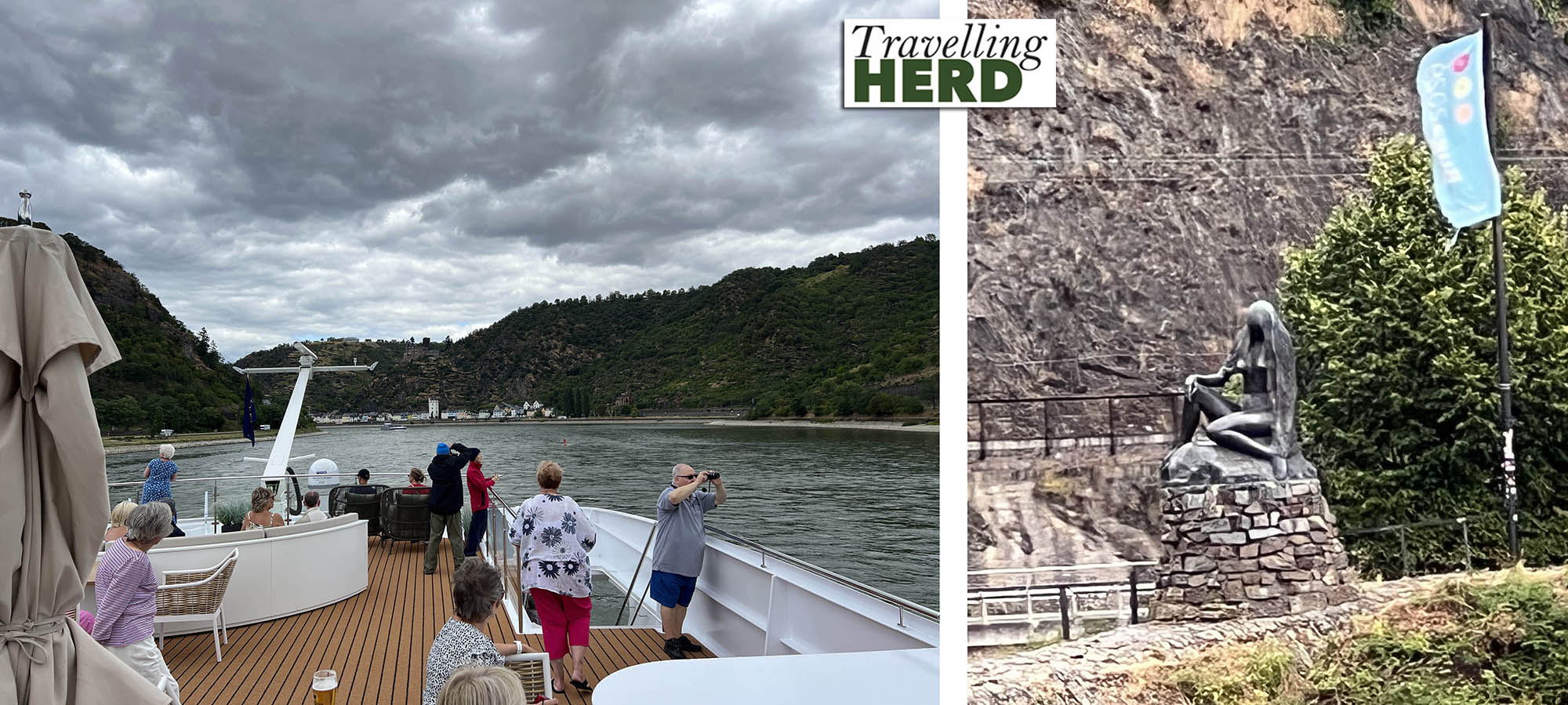
We continue on the journey up the Rhine passing more picturesque castles . . .
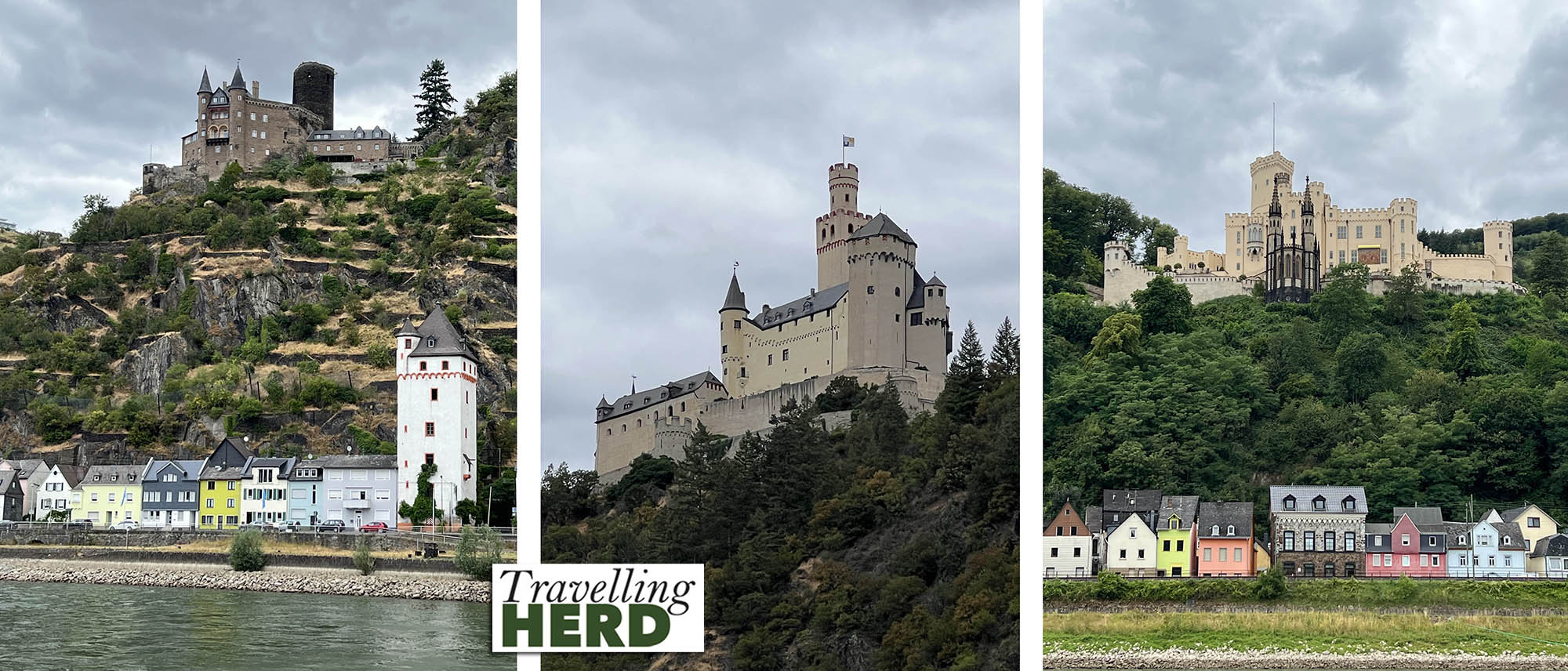
. . . until we arrive in Koblenz, at the confluence of the Moselle and Rhine Rivers, and Deutschmark Eck [German Corner] a promontory into the river which is dominated by a large statue of Kaiser Wilhelm I. This was first erected in 1897 in appreciation of the Kaiser’s role in the unification of Germany.

The original statue was destroyed during WWII and only the plinth remained until, following the reunification of Germany, after some controversy and extensive discussions, a replica was erected on the pedestal in 1993.
Whilst Jaime stayed on the boat Robert went for a walk around the old town of Koblenz.
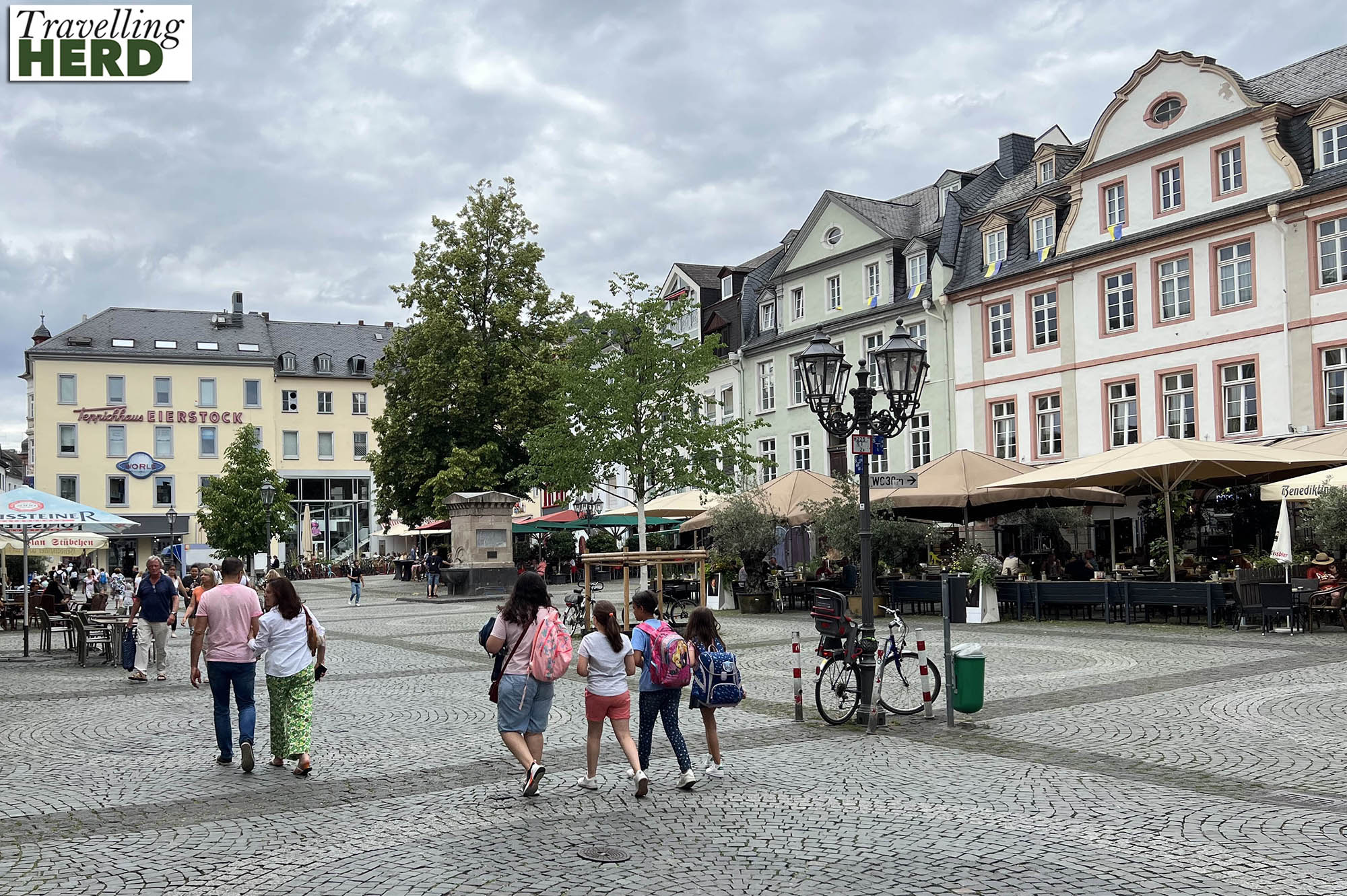
Unfortunately Koblenz had been severely damaged during the Second World War, so not much of the old town exists and there is very much a new modern section to the city.
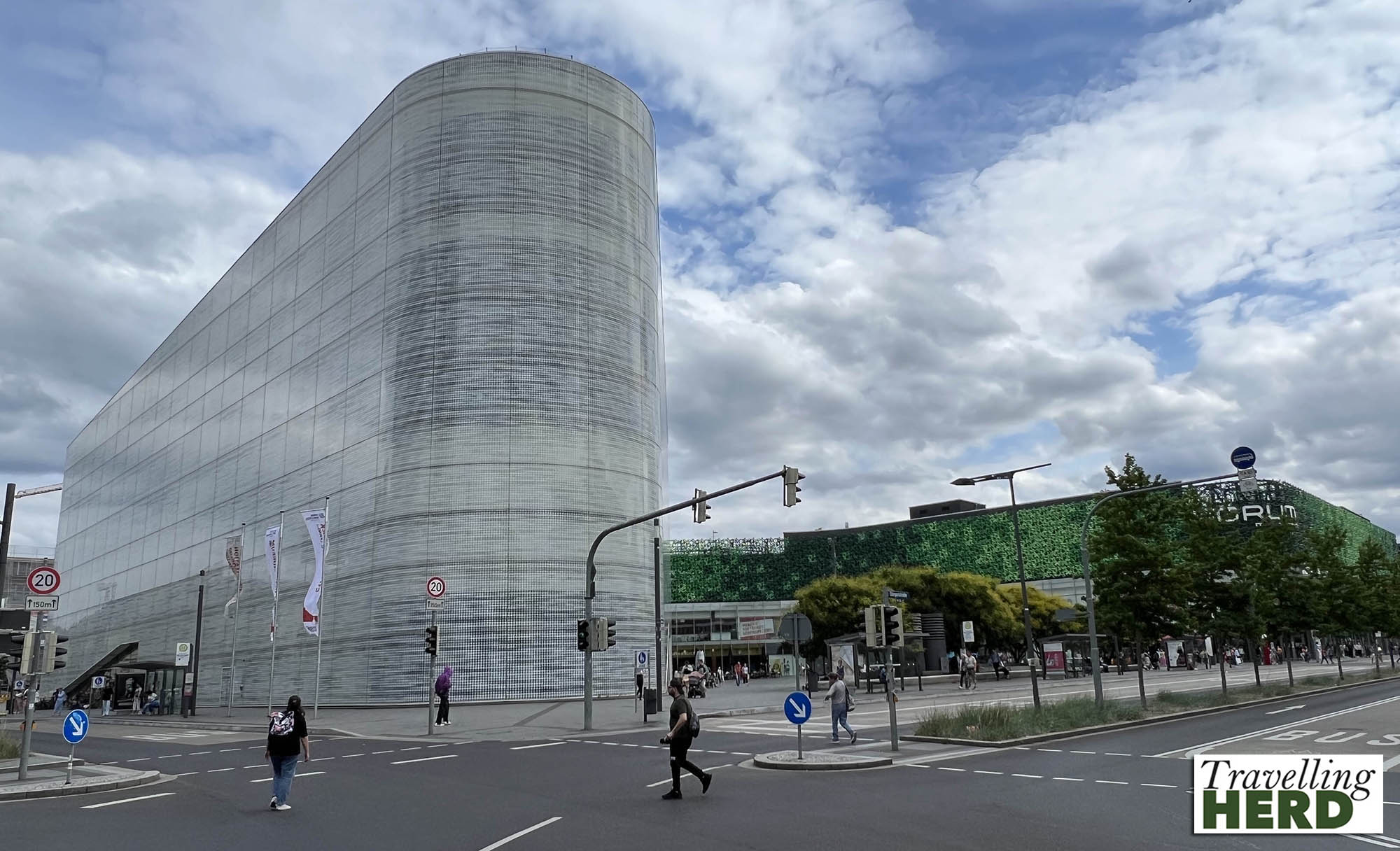
Robert enjoyed a beer in one of the very old local bars. Having had dinner Jaime stayed on board for 60s/70s disco night while Robert went to the local pub with one of the American passengers on the cruise, and this ended up being a very long evening which lasted well into the following morning. After some liberal sampling of the local beer, Robert, in what he perceived to be an effort at sharing out the roles normally assigned to Matilda, returned to the boat in the early hours of the morning with said American, who had acquired some beer glasses.
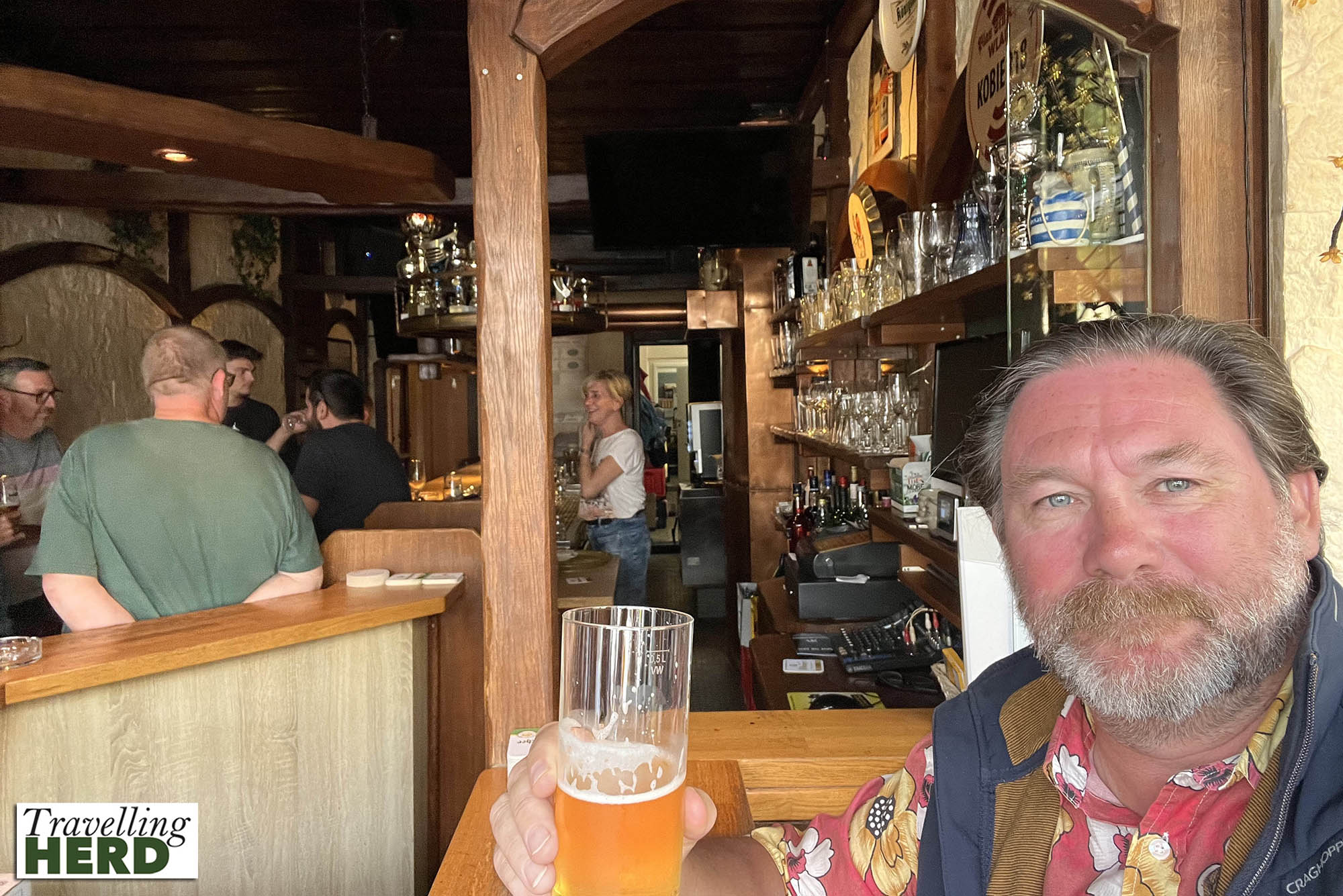
The next day the boat continued its journey north on the River Rhine with Jaime undertaking one of the roles usually assigned to Matilda.
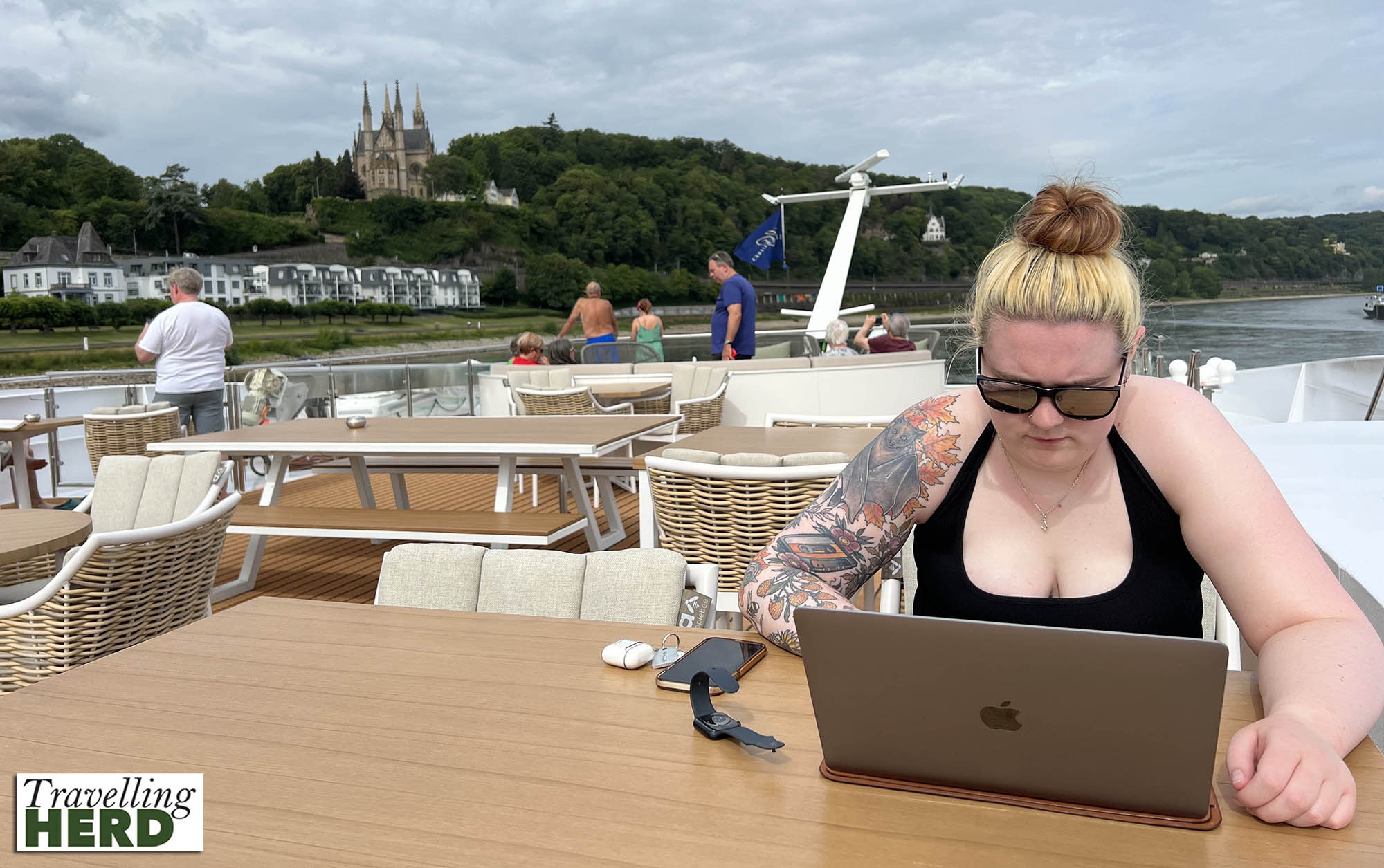
The next port of call was the village of Königswinter and the famous Drachenfels Railway.
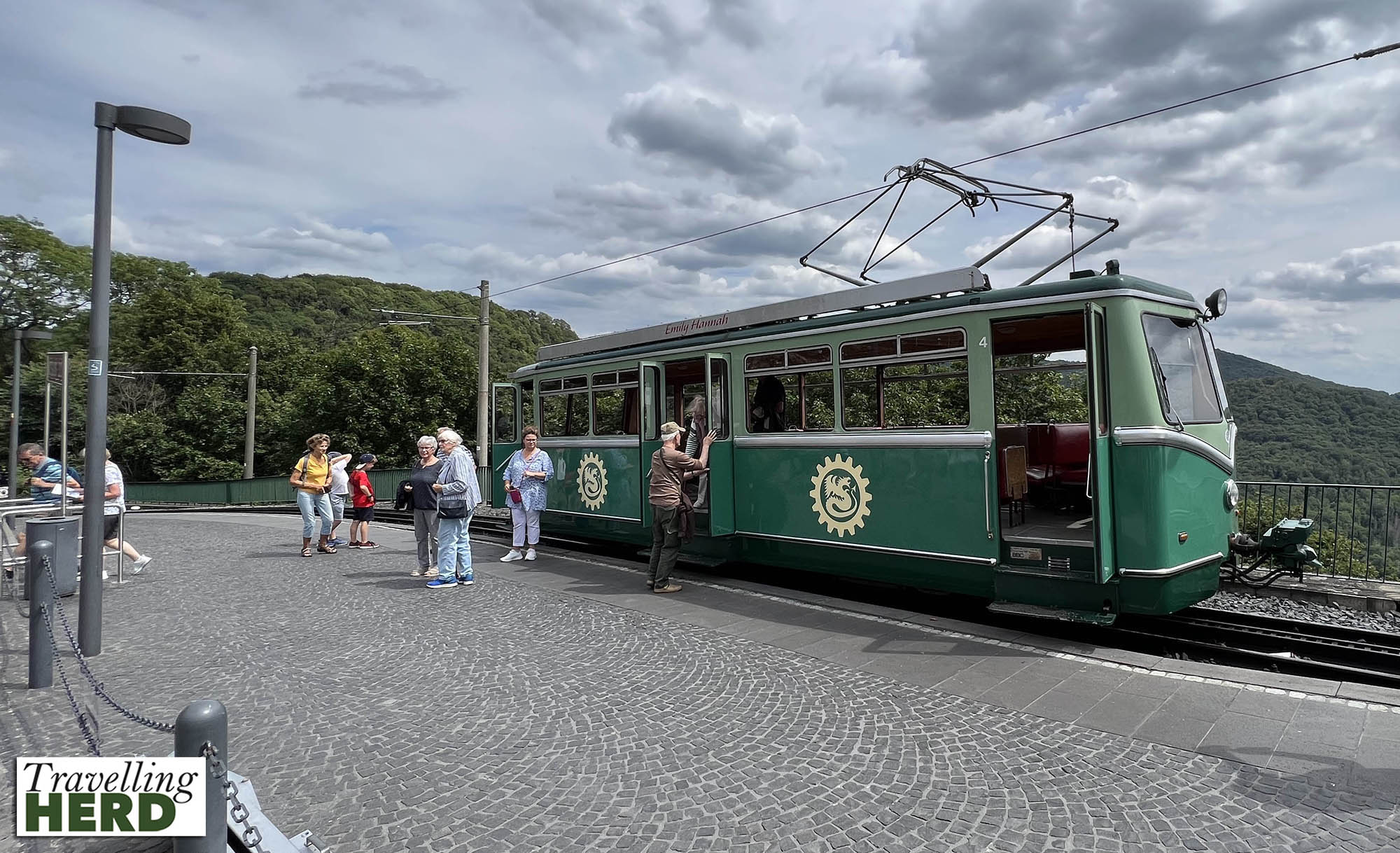
This is an electric rack railway that climbs 1.5km to an altitude of 289m up to the castle at the top of the hill.
It is one of just four rack railways still operational in Germany.
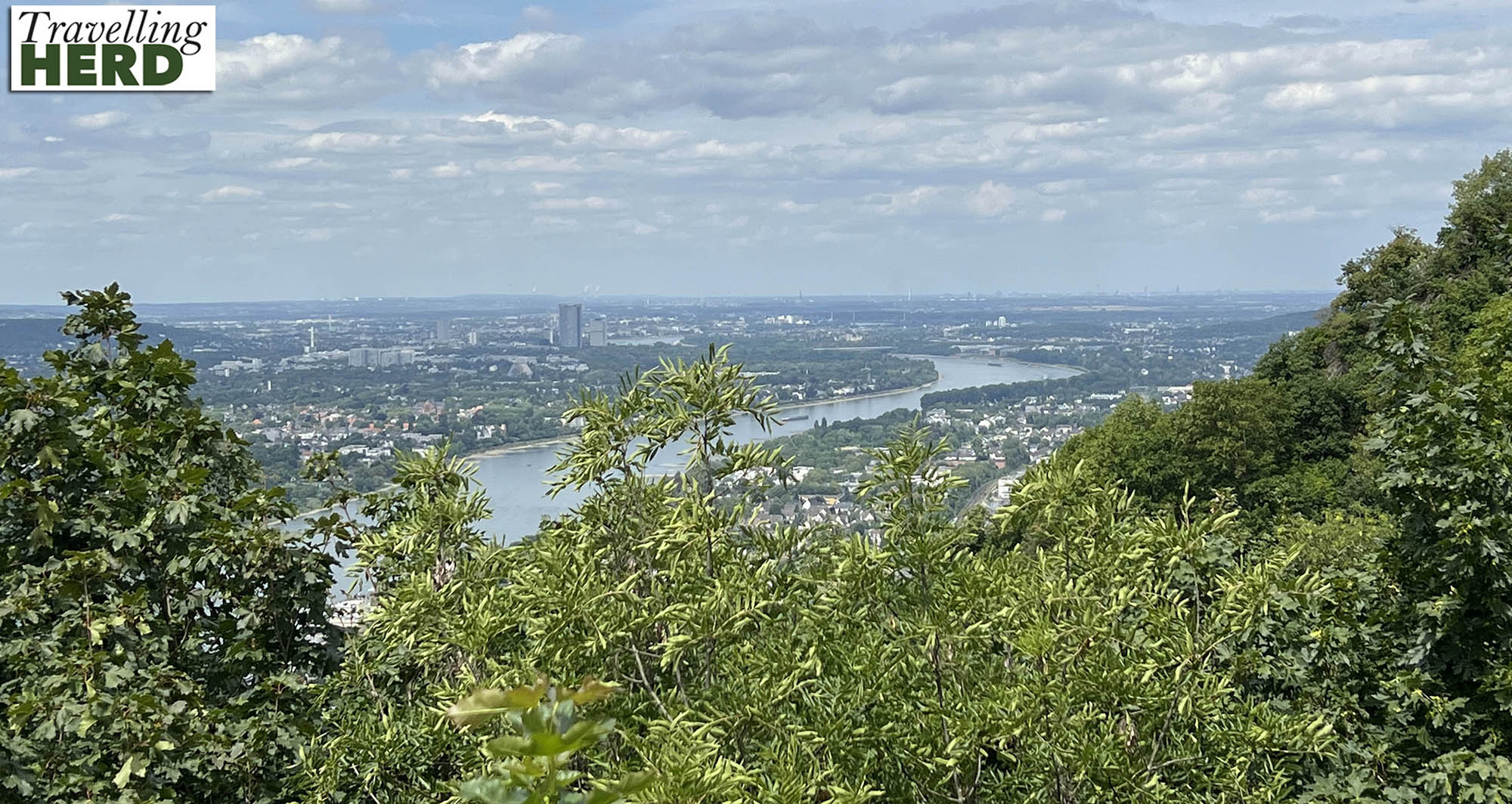
There are some quite extensive views on the route and on a clear day you can see the cities of Bonn, Köln [Cologne] and Düsseldorf, stretching out northwards along the Rhine.
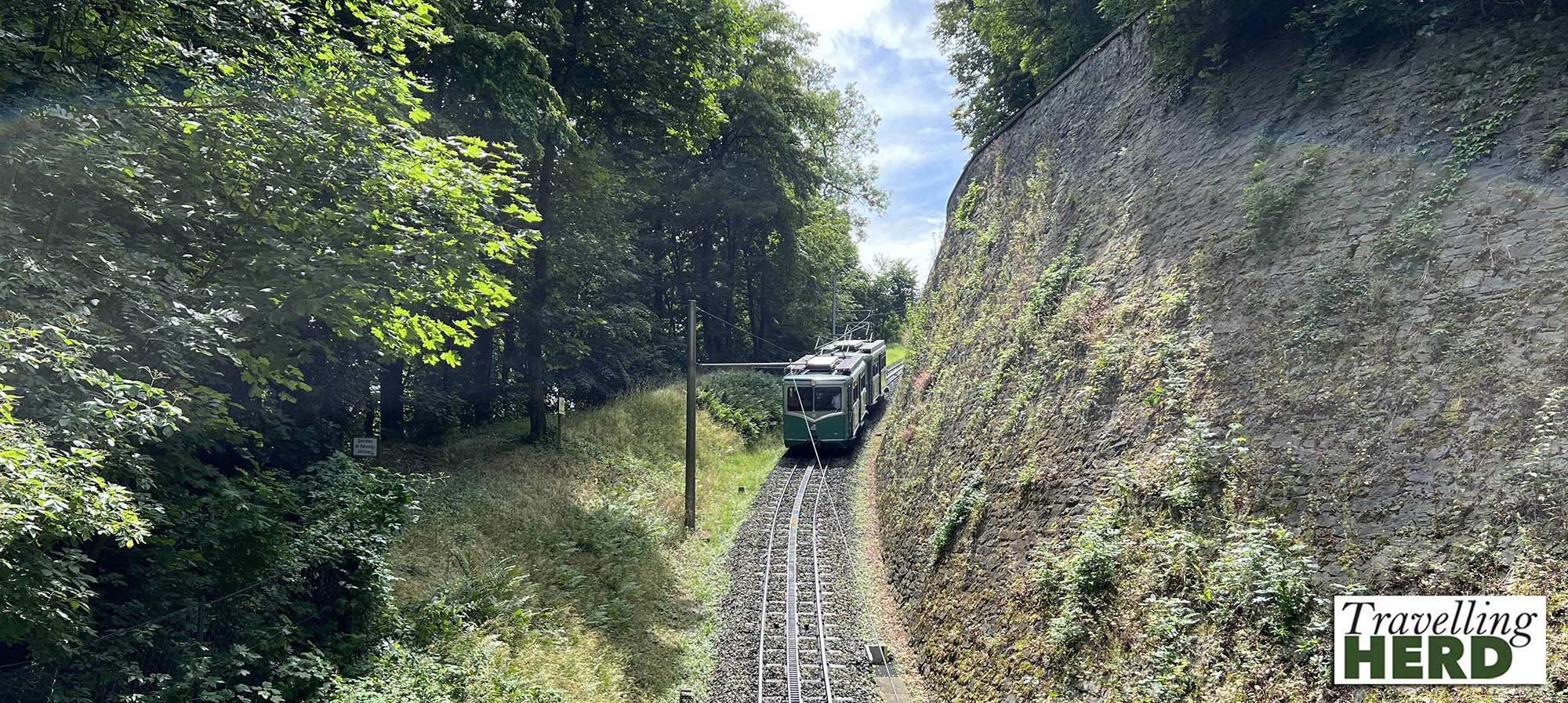
It first opened exactly 140 years to the day before our visit, on July 13th 1883, when the locomotives were powered by steam and were designed with a natural incline incorporated into the engine as you can see in the photo below.
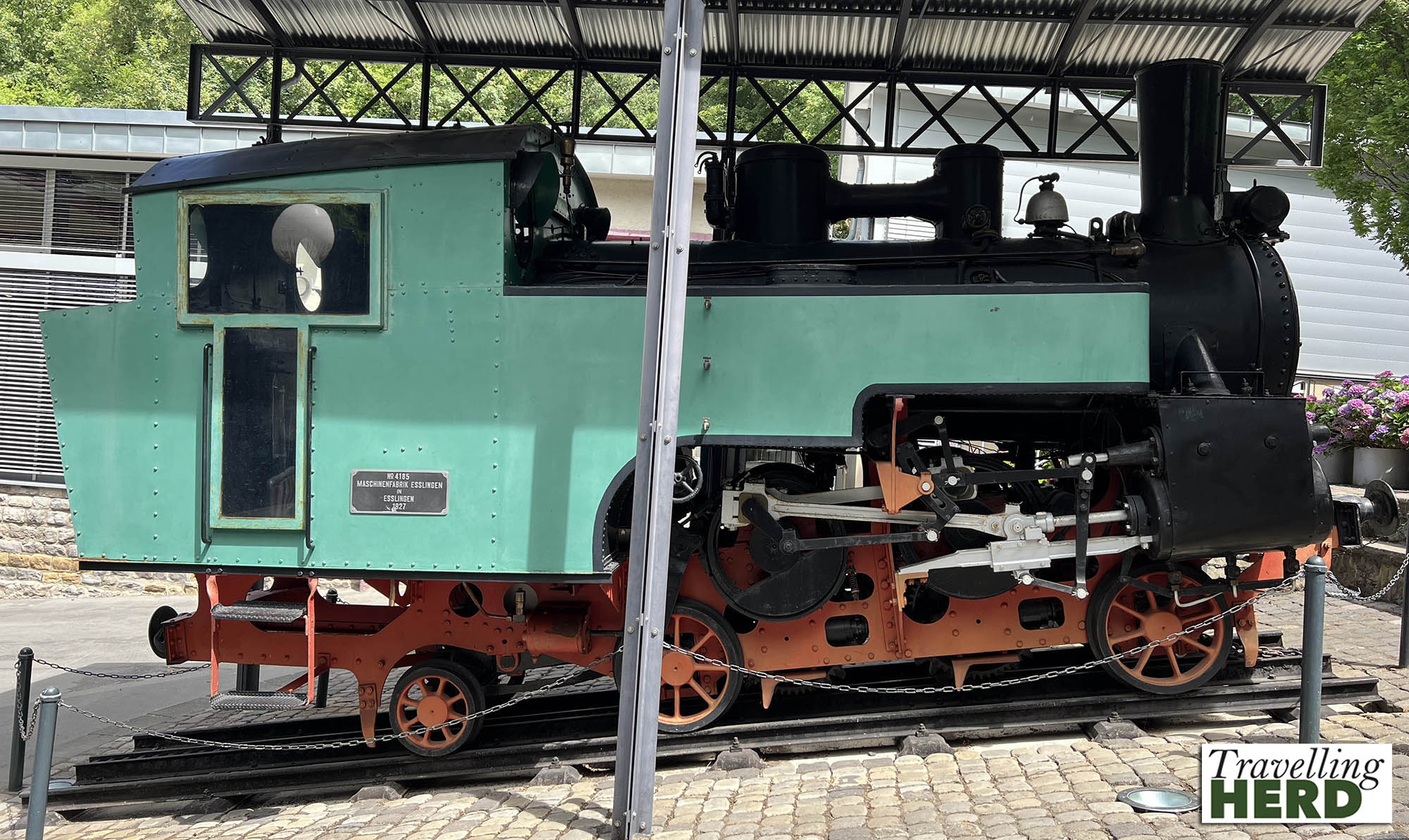
On Saturday we moved on to Köln. Unfortunately today the rain has started so our planned long walk round Köln was shortened, so Jaime and Robert took refuge from the weather and visited the cathedral [see Selfie of the day].
Köln Cathedral is the largest Gothic cathedral in northern Europe. Construction began in 1248 but building work stopped around 1560, with the cathedral as yet unfinished. A huge crane on top of the belfry of the south tower provided the Köln skyline with an unusual landmark for over 400 years. Attempts to complete the construction began around 1814 but the project was not properly funded until the 1840s. The edifice was completed to its original Medieval plan in 1880

Jaime then returned to the boat while Robert went searching for stamps for the postcards we were sending and also for some squirty cream which he had been asked to get by the cruise manager – don’t ask why.
Robert had a couple of beers in Köln sampling the very nice cross beer which unfortunately sold in very small, 0.2 L glasses, and then a final beer on a Polish market stall mode right next to the boat.

Video of the day:
Selfie of the day:
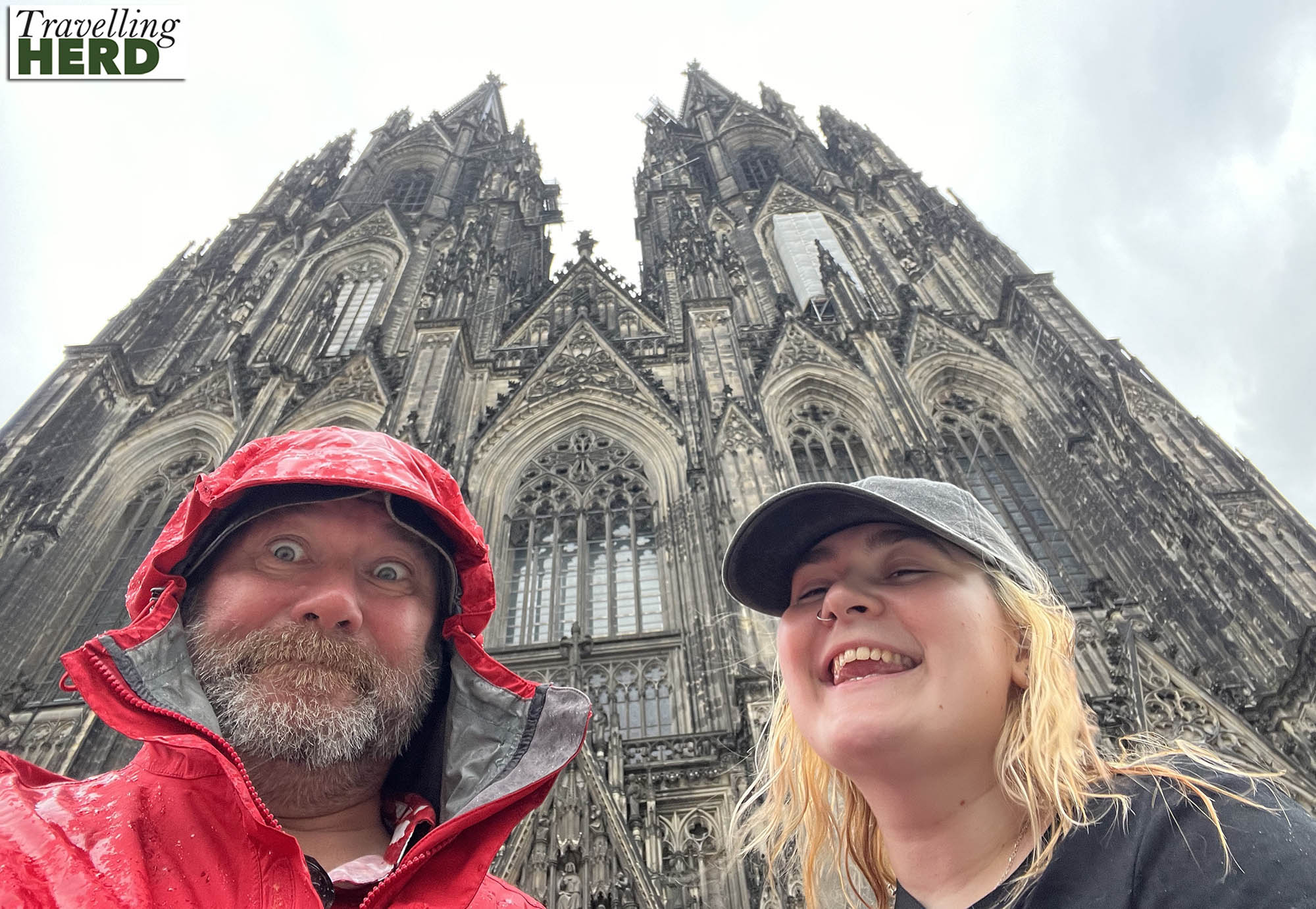
Dish of the day:
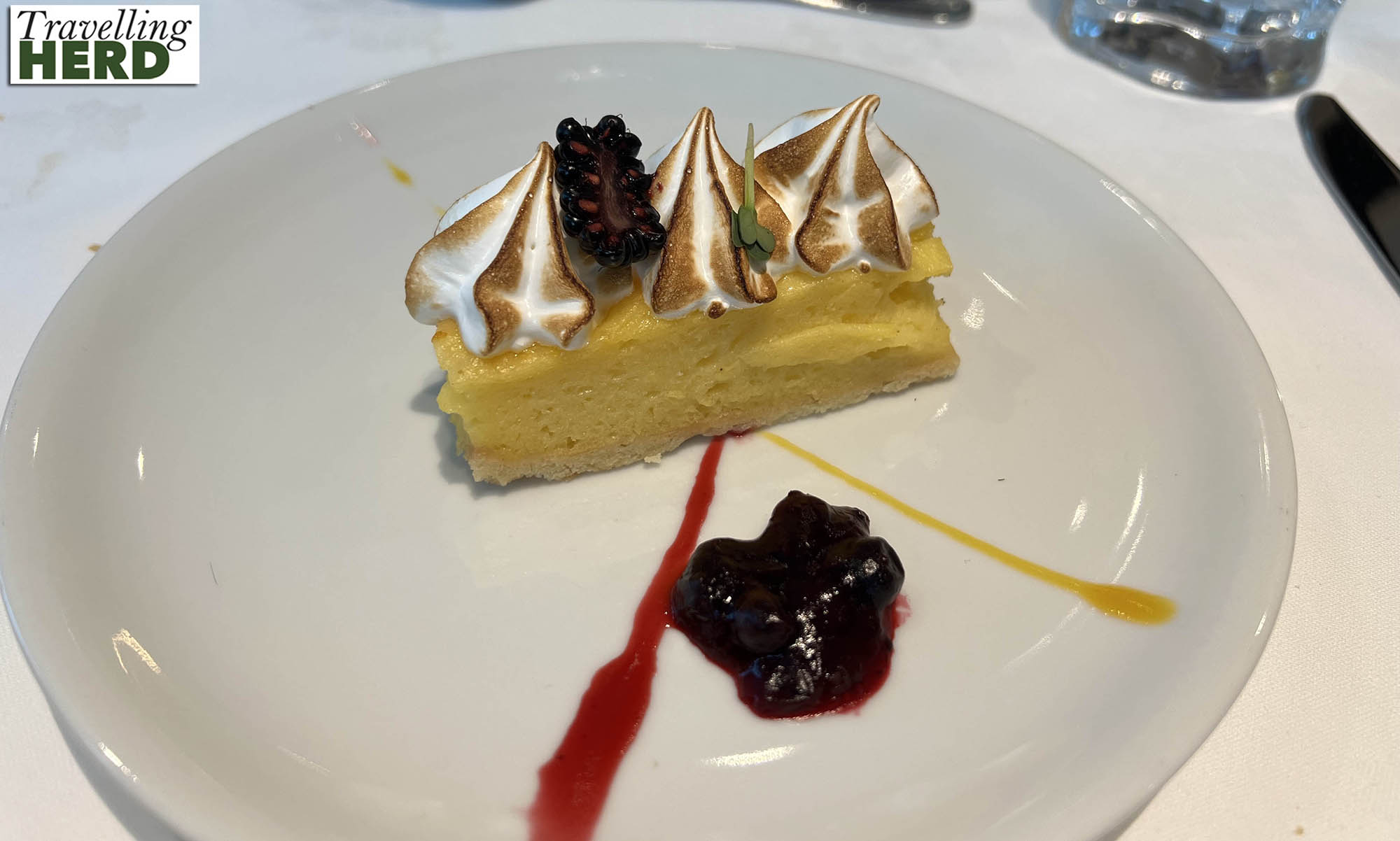
Route Map:
